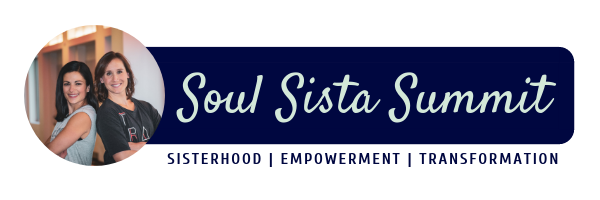Leverage Your Strengths to Pursue Your Goals
Today’s guest post comes courtesy of my wife Dr. Lisa Lewis who, later this summer, will be one of the presenters taking part in the Soul Sista Summit here in Boston the weekend of June 22nd.
For more information go HERE.

Copyright: ipopba / 123RF Stock Photo
Leverage Your Strengths to Pursue Your Goals
As a psychologist, a performance consultant, and a lover of personal evolution and enhancement, I often talk to clients, trainers, coaches, and students about their dreams and their endeavors.
Whether they are personal, professional, or fitness-related…goals shape habits, require focus, motivation, and regulate how we execute all kinds of behavior. Typically, I hear people focus on their “weaknesses” – the barriers to behavior change, the “bad habits” that get in the way of change, the disappointments they feel toward themselves.
This negativity bias is natural.
We are inclined to focus on the negative, and for negative experiences and emotions to weigh more heavily on us than positive ones. Research on negativity bias demonstrates that a significantly higher ratio of positive emotions are required to counter balance negative ones – in other words, we need many, many more compliments than we do criticisms.
We need more pats on the back, and less kicks in the ass.
My clients will naturally beat themselves up, tear themselves down, and be hard on themselves, and have been working hard on those interventions prior to meeting with me. In my years of clinical and performance-enhancement work, I have come to see clearly that I will not add value or help to facilitate change by doubling-down on negative thoughts and feelings, or by centering goals around “weakness.”
Instead, I utilize a strengths-based approach – creating goal-directed action plans around what the client excels at, enjoys, and executes easily.
Because negativity will always creep into our thoughts and color our evaluations in a more intense way than positivity, focusing on strengths and capitalizing on what you do well will correct this imbalance, and allow for a clear, more efficient, and more productive approach to making change and facilitating growth.
Here is an example:
Jeff is 34-year-old investment banker who, when I met him, worked 90+ hours per week, lived alone in his city apartment, and spent Friday night through Sunday morning drinking to excess and using cocaine.
When he first came to see me he had “tried everything” to curtail his drinking and stop his cocaine use.
This included working longer hours, avoiding hard liquor and “only drinking beer” when he would go out out on the weekends, avoiding friends that used cocaine, and carrying around a mountain of guilt and shame wherever he went, because he “deserved it”.
Jeff’s opinion of himself was highly negative, and he explained that he was often “on edge,” irritable and agitated easily, and anxious most of the time. He told me he wanted to “cut the shit” and “grow up.” His approach to addressing the problem had been punitive, and his feelings toward himself and his approach to “fixing” himself were negative.
I proposed a different approach – one that utilized his strengths and would promote feeling good about himself.
As you can imagine, this Type-A, high-achieving client was skeptical. He rolled his eyes at the idea of “positivity” and let me know he had nothing to gain from “going easy on” himself!
But, my persistent, insistent, and consistent collaborative approach focused on negotiating for positivity and strength-building.
In weekly sessions with Jeff, I encouraged adding and then increasing physical activity – something this collegiate athlete had been missing in his professional life. Despite his tendency to focus on negativity, I was persuasive, and eventually, he remembered being strong.
Fast.
Athletic.
I wanted to capitalize on those positive qualities.
First he added two cycling classes on mornings before work, and soon that increased to five days a week. Next, he added boxing a few afternoons, then added in some strength training, and finally a yoga class on the weekend.
The more physically active Jeff was, the better all other aspects of his life.
By adding something he loved (and was good at), other behaviors naturally changed.
He was so exhausted in the evenings that he chose going to bed or watching a movie with a lady-friend over going out to drink and using cocaine. He was so drained from all that physical activity that he felt motivated to improve his nutrition, which also increased his motivation to limit his alcohol use.
He enjoyed improved attention and mental acuity at work, which was noticed by his colleagues, and most importantly, he felt proud, engaged, and “on his game”.
Today, Jeff works a bit less, drinks a lot less, and abstains from cocaine.
He enjoys an even temper, low anxiety, and feelings of confidence and pride.
He is planning to play on a community soccer team this summer, to train for his first boxing match in the fall, and to try the “Whole 30” diet during the upcoming month.
These are goals that Jeff has identified as interesting, meaningful, or just plain fun.
Although they may not look like treatment for substance abuse or anxiety at first glance, pursuing goals that result in positive feelings, behaviors, and self-appraisals led to a decrease in self-destructive behaviors and eradicated a self-reinforcing cycle of negativity.
My advice to you is to adopt a similar approach in pursuit of your goals!
Even though we may not know each other, I assume that, if you are reading this, you are goal-directed, driven, and probably tough on yourself. You have most likely exhausted all possible benefit there may have been from beating yourself up over your “weaknesses.”
What Do You Have to Lose by Trying a Different Approach?
Identify your goal.
Be as specific as possible.
Then, name the strengths and skills that you bring to the table.
They may not seem directly connected in the moment, so think broadly, and then weave those strengths into your action plan. If you love to bake, transfer those skills into preparation for your upcoming triathlon by baking some delicious protein bars.
If you were a dancer or a gymnast as a child, and you miss it, choose a dance-based exercise class to help you get back to regular exercise – don’t stress out about finding the “best” or the “right” workout.
Thank you for reading!
And best of luck in pursuit of your goals. Always remember that you have all of the ingredients you need, they’re inside of you, to make the change you want for yourself. If you want to read more from or about me, please visit my website: drlewisconsulting.com.
Soul Sista Summit
If you are interested in hearing me speak, and learning more about personal growth and a strengths-based approach, register here for the Soul Sista Summit.

This two day women’s only experience is designed for personal growth, and is hosted by Athena Concannon and Lauren Bradley. The summit consists of workshops and workouts, and an exploration into approaches to lifestyle, fitness, and nutrition that facilitate thriving.
At the summit, I provide a 2-hour presentation on using mental skills to enhance motivation, persist in health- and goal-directed goals, and to stop and reframe negative thinking patterns that keep you from your goals. Learn to leverage your strengths and your passion in pursuit of your goals. The Soul Sista Summit is Saturday, June 22nd, and Sunday, June 23rd.
If you are a woman and can make it to Boston this summer, I hope to see you there.



Comments for This Entry
Best Fitness Articles From The Previous Week: May 5 2019 -
[…] Leverage Your Strengths To Pursue Your Goals: Courtesy of Dr. Lisa Lewis on […]May 3, 2019 at 5:44 am |
Shane MCLEAN
This article is solid goal. I need to hire you. :)May 5, 2019 at 10:32 am |
Vikram Singh
Thanks for posting such an vital points for changing one's lifestyle. Focus on things you love to do and this would negate the negative things from your life.May 10, 2019 at 2:21 am |